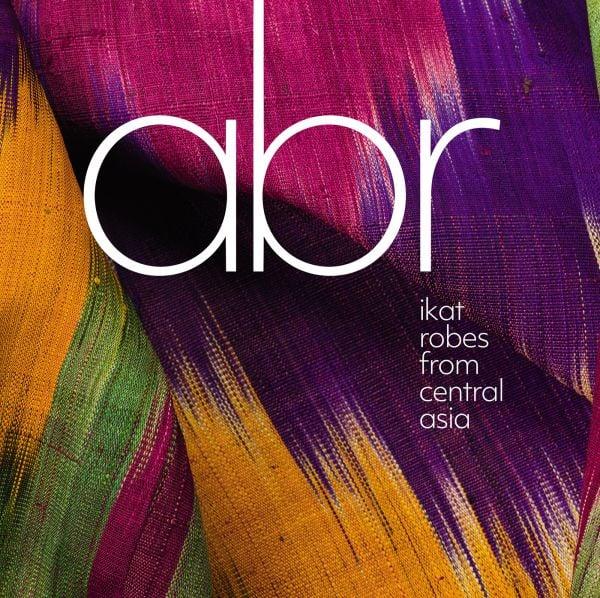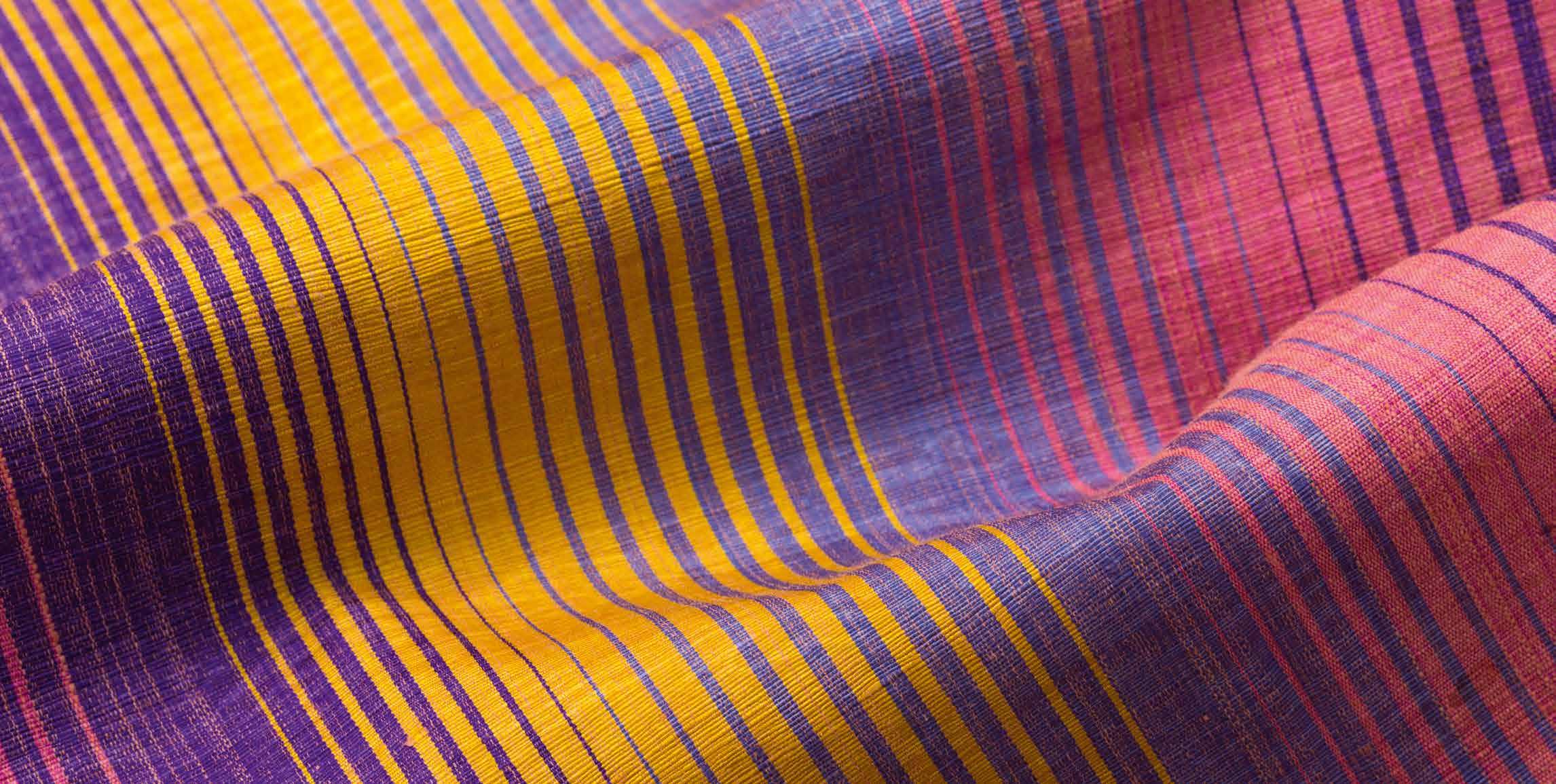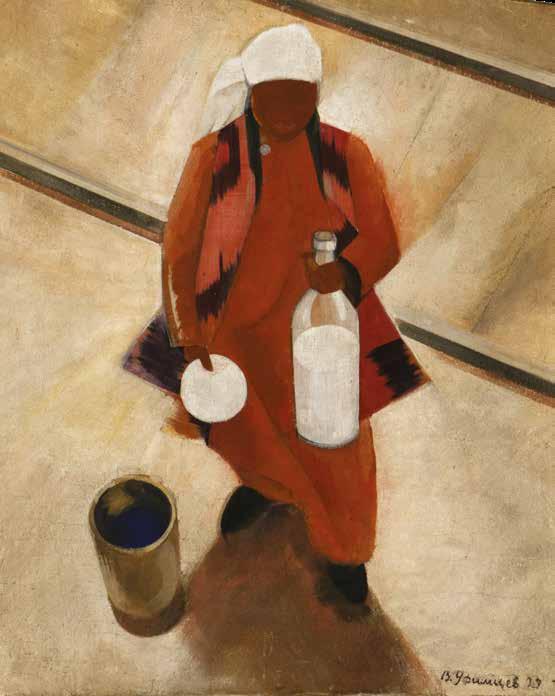








knowledge — as well as books about the history of Turkestan, Alexander collects and subscribes to everything that is published about ikats, approaching his passion with the sternness of a scientist.
I began to persuade the collector to show his collection in a museum space. We invited Elena Tsareva, one of the foremost experts — if not the foremost — in Central Asian textiles, to come from St Petersburg (she is a leading researcher in the Kunstkamera, Academic Museum of Anthropology and Ethnography named after Peter the Great) to see if the game is worth the candle. We received the unambiguous answer: ‘One of the most comprehensive and representative collections in the world, especially with respect to Bukhara and Khorezm ikats of the second half of the 19th century‘, followed by her consent to become the curator of the collection. We offered the Pushkin State Museum of Fine Arts the opportunity to exhibit the collection. The museum, without further ado, agreed, deciding to display the magnificent ikats from the collection of Alexander Klyachin within the context of post-war European abstract painting of the 20th century. The result was an exhibition of absolute masterpieces, ‘East West Jazz‘, with a beautiful catalogue published in collaboration with Misha Anikst.
This book is the next step in the journey of the AK Collection.

25
25 To the Train (detail), Victor Ufimtsev, The State Museum of Arts of Karakalpakstan named after I. V. Savitsky
26 Portrait of K. B. Kustodiev, Boris Kustodiev, 1922, National Art Museum of the Republic of Belarus
patterns), feathers, palmettes and amulets, although more abstract patterns started to emerge in the middle of the 19th century. Yet information about the designs, the motivation of the designers, and the striking use of pattern and colour, is thin on the ground. An insight into the mind of one of the designers can be seen in the memories of a 20th-century pattern designer, Kirgizboy Tashtemirov. He designed a pattern called Gulbahar (blossoming spring). Yet there is not one actual flower in his design. The pattern instead conveys ‘the mood of nature bursting into flower in springtime‘.18 Set against the arid desert landscape with its mud-brick houses, the abr robes of 19th-century urban Central Asia are an evocation of the desert spring, a joyful flourishing of unexpected beauty, and a testament to a highly skilled art with historic roots which reached such an unexpected peak of expression in these haute couture garments of the desert.
1. Rahimov, Rahmat, ‘Bukhara-Petersburg: The Silk Road to the House of the Romanovs‘, in Oriental Dreams, Russian Avant-Garde and Silks of Bukhara, edited by Razvan, Efim A., Peter the Great Museum of Anthropology and Ethnography, St Petersburg, 2006.
2. Schuyler, Eugene, Turkistan: Notes of a Journey in Russian Turkistan, Khokand, Bukhara, and Kuldja, New York, 1877.
3. Ibid.
4. Tsareva, Elena, East West Jazz, Pushkin State Museum of Fine Arts, Moscow, 2019, p. 71.
5. Vambery, Arminius, Travels in Central Asia, London, 1884.
6. Tsareva, Elena ed., Kostyum Narodov Sredney Azii: Istroiko-Etnograficheskie Ocherki, Moscow, 1979.
7. Sukhareva, O. A., The History of Central Asian Garments, Samarkand (second half of the 19th–beginning of the 20th century), Moscow, 1982.
8. Tsareva, Elena ed., Kostyum Narodov Sredney Azii: Istroiko-Etnograficheskie Ocherki, Moscow, 1979.
9. Ibid.
10. Meakin, Annette, In Russian Turkestan, London, 1903.
11. Tsareva, Elena ed., Kostyum Narodov Sredney Azii: Istroiko-Etnograficheskie Ocherki, Moscow, 1979.
12. Fitz Gibbon, Kate, and Hale, Andrew, Ikat: Splendid Silks of Central Asia, London, 1997.
13. See Zernickel, Maria, ‘The Textile Arts of Uzbekistan‘, Kalter, Johannes and Pavaloi, Margareta eds, in Uzbekistan: Heirs to the Silk Road, London, 1997.
14. Lansdell, Henry, Russian Central Asia, London, 1885.
15. Rahimov, Rahmat, ‘Bukhara-Petersburg: The Silk Road to the House of the Romanovs‘, in Oriental Dreams, Russian Avant-Garde and Silks of Bukhara, edited by Razvan, Efim A., Peter the Great Museum of Anthropology and Ethnography, St Petersburg, 2006.
16. Ibid.
17. Khanikoff, N, Bokhara: Its Amir and Its People, London, 1878.
18. Fitz Gibbon, Kate, and Hale, Andrew, Ikat: Splendid Silks of Central Asia, London, 1997.



1. Young woman’s munisak winter robe, probably bridal
Length: 132 cm; across sleeves: 206 cm; hemline: 192 cm Bukhara, likely rural district, mid-19th century or later Coll. No. AK-3. See Appendix
Cut: Tunic-shaped, open front: central body: of two lengths, stitched at the back and folded along the shoulder line. Cut diagonally in the front to create a deep and wide opening. Both sides of the cut are supplemented with long gores (1 cm at the shoulder line, 26 cm at the bottom). Wide neck strap: long pinch inside the back seam (begins from beneath the neck strap). Skirt side panels: of trapezoidal form, with short side cuts at the bottom. Gores between the side panels and the back and front body panels. Sleeves: of three parts, straight along the shoulder line, stitched to the body, broad around the armhole (37 cm), narrowing at the ends (29 cm). Narrow under the armhole straps, stitched between the sleeves and the side panels; right side at the front and left-side at the back (rotating symmetry).
Front fabric: Adras tabby, 26.5 cm wide, moire and weft reps effect. Warp: silk, loose spin Z1; density: 54 ends/cm. Cotton edge: blue, Z2; density: 5 ends/5 mm. Colours of silk: red, yellow, white. Cotton: light blue. Weft: cotton, Z2, white, 16 shoots/cm, regular weft return on the left side and over five warps on the right.
Lining: Three variants of calico. Main type: white motifs over a red background. Fragmentary: small and largescale checks over a light grey background. One-colour gores along the bottom seam.
Bias inner edge lining: Semi-silk adras in wide red-grey stripes.
Edge trimming: Silk djiyak in dark blue and sky blue shades (0,8—0,9 cm wide).





